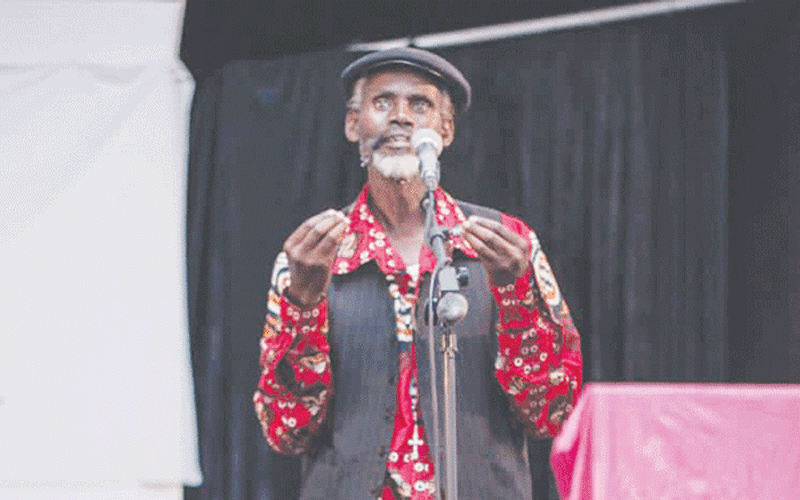
“What a rare joy to be immersed in a play that activates nineties nostalgia and reflects us in all our wondrous complexity,” is how Sista Zai Zanda reacted after watching the play Family Riots on its last run on November 23, at the National Gallery of Zimbabwe (NGZ). Sista Zai is an educator, curator, and founder of the Pan Afrikan Poets Café, based in Melbourne, Australia.
Her view reflects a common sentiment by many who watched the over one-hour long performance of the play during its run from November 15.
The play, written by Gideon Wabvuta, was directed by Lucie Tiberghien and Makomborero Muchemwa, and presented by Zimbabwean-American actress and playwright Danai Gurira with Almasi Collaborative Arts.
Almasi Arts is a nonprofit organisation that strives to create and facilitate artistic collaborations between African artists, and American artists and artistic institutions. It was co-founded in 2011 by Gurira with the aim to build infrastructure that allows African artists to flourish. Almasi (Al-ma-see) means brilliant, diamond in Swahili. The organisation believes that African artists have a unique voice that deserves to be heard globally.
Set in the 1990s, Family Riots is a dramatic performance about the Mutanga family, a household located in Mbare but with middle class aspirations. The play exposes hidden cracks in intimate relationships based on the character’s multidimensional connections and different levels of economic status. On the thematic level, the post-colonial clash of tradition versus modernity intertwines with conflicting religious beliefs. The family drama is set in parenthesis to an ongoing civil strife outside the household.
On set, the ongoing turmoil in the streets is symbolised by the smoke that billows onto the stage from time to time.
The smoke could be from burning and looting, as well as the teargas used to disperse the unruly crowds. In urban lingo, smoke means tension, trouble and challenge.
Yeukai Mhandu, as Tabitha/Tabie/Mai Tinashe, is the long-suffering maid who brings dignity to the role of underdog. She is cautious, and self-aware. In spite of her educational shortcomings, she is determined to keep trying to improve her grades. Part of her motivation is revealed in the statement "I feel smart when I do maths…I’d like to feel more of that’’. Initially, Tabie does not want to join the protests going on outside the household because she feels that, “Fighting is an option for those who can afford to lose."
- Gweje relishes fashion achievements
- Daily life struggles reflected in Burning Figure
- 'Film sector drives economic growth'
- My Beautiful Home contest over subscribed
Keep Reading
Tanatswa Kumirai, in the role of Bhibho/Bibo, brings energy that picks up the play from its staid moments. Bhibho is a tenant living in a cottage and appears to be having a secret affair with Tabie. He is an active participant in an organisation whose activities are hidden behind the stage curtains. In response to Tabie’s apathy, Bhibho directly confronts the audience to declare, “He (the worker) will not survive the onslaught of the wealthy elite if he doesn’t fight, fight, fight!’’
Caroline Mashingaidze-Zimbizi as Sabina /Tete Sabina/ Mai Allan elicits titters from the audience by her feisty portrayal of the intrusive sister-in-law with sassy comebacks in ChiShona. In one poignant scene, she picks up a framed portrait of her deceased father, intimately gazes at it and puts it down. In reality, the black and white portrait is actually Zimbizi’s father who passed away a short while before the play started its theatrical run.
Charlene Mangweni-Furusa is Primrose/Mai Prince. Primrose comes from a wealthy family and holds conservative views against the agitations of the working class. “One stayaway after another. One protest after another. Zvakachinjei – nothing! Everybody knows that,” she says. Furusa delivers a natural performance that amplifies her character's complicated back story.
Michael Kudakwashe as Sydney shows his comedic chops by bringing in subtle humour and punch lines. He may be seen as an underachieving Grey Bhonzo from the famous Ben Sibenke play My uncle Grey Bhonzo. Sydney is still smarting from the disdain of his father-in-law, a wealthier man who considered him not good enough for his upper-class daughter. His miscalculated business decisions have put the family at risk of eviction. As the man of the house, he also finds himself caught up in various conflicts between other characters.
Barely 13, Shawn Kupakwashe Kudumba is the youngest member of the cast and with the least experience to draw from. Kudumba delivers an outstanding performance as Prince, thanks to a perfectly written part and stage direction. Prince is the blissfully ignorant pre-teen whose major interest is watching television. Furusa calls him “the sweetest stage son I could’ve asked for, with mind-blowing talent”.
As a play about family conflicts, the biggest standoff could be that between the elderly siblings Sydney and Sabina over family issues concerning their father’s burial and lack of respect for traditional rites.
Other issues arise between Sabina and Tabie the housemaid, who get into a spat about the former’s errant son Robert who fathered a son (Tinashe) with the latter. Sabina’s ill treatment of Tabie exposes her bigotry in a sharp retort to her brother when Sydney attempts to quell their argument, "You let her get away with a lot of things, as if she’s one of us.’’
Meanwhile, Primrose and Sydney have their own issues stemming from financial difficulties, their struggling business and eminent foreclosure on the house which Sydney inherited from his late father. Primrose, who is used to asking for assistance from her affluent father, is concocting a plan to get more help.
Of all the characters, Bhibho is the outcast. Being named on account of his hairstyle minimises his humanity. In the Mutanga household, his outsider status is reflected by his separate abode in a structure detached from the main house. It is also reinforced by his presence on the stage, where he spends more time on the margins of the virtual room.
He seldom ventures centre stage as other characters do — except when he is alone with Tabie, strutting about like the man of the house.
Later when he pops in to give Tabie a T-shirt for the protest, she warns him that the lady of the house is at home, after which mai Prince walks into the room and chases him out like a dog. In another scene, he dives behind the couch when tete Sabina busts into the room.
And when he tries to greet her, she looks through him and pointedly ignores his handshake.
Bhibho is the typically disenfranchised ghetto youth who has nothing to lose, a college dropout with the highest score in mathematics and a mantra that “You can be anything you want.” His struggle for survival has led him to join a quasi-political labour movement, ‘The Union’. In a foreboding moment, he declares: “Someone has to do the fighting and the losing”. Ironically it is Bhibho who rescues Prince after both of the boy’s parents failed to locate him in spite of taking great risks.
In the final scenes, an agitated and inconsolable Bhibo is furious after learning that the leader of the protest has met a gruesome fate. Tension gets heady as Sydney and Tabie struggle to physically restrain Bhibho from going back into the fray. In the climatic scene, he finally bolts out as if unleashed by a superhuman force.
Family Riots is a multilayered story that cannot be unpacked from a single point of view. While the tension in the streets echoes the confrontation in the household, the family drama is a macro-cosmic reflection of the 90s era national crisis.
*About reviewer:
Nyadzombe Nyampenza is an art critic, photographer, and conceptual artist. In 2023 he was the Nama recipient for Outstanding Journalist (Print). He was awarded second prize at the Zimbabwe Annual Art Exhibition (2016), and represented Zimbabwe at Bamako Encounters (photography biennale) in Mali (2015). Nyadzombe was the 2020 Fellow at Apex Art, in New York City. He is passionate about non-fiction creative writing and his ambition is to raise public awareness about visual arts from Zimbabwe through engaging, accessible, critical, and entertaining narratives.
Are you a reviewer [email protected]










